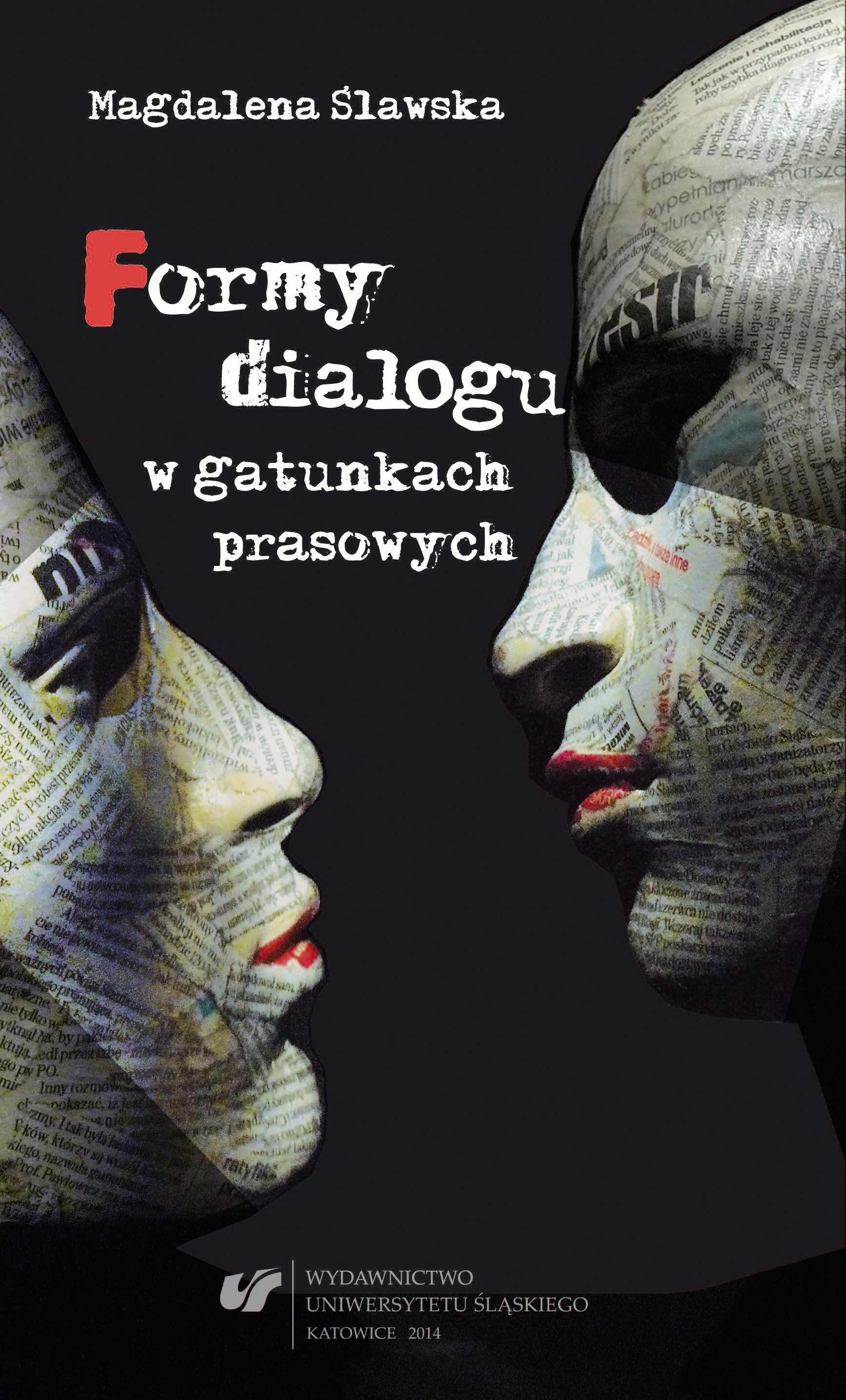Formy dialogu w gatunkach prasowych
Dialogue forms in the press genres
Author(s): Magdalena Ślawska
Subject(s): Language and Literature Studies, Applied Linguistics, Studies of Literature
Published by: Wydawnictwo Uniwersytetu Śląskiego
Keywords: Dialogue in Press;
Genology Perspective;
Interdisciplinary Work;
Press Genres;
Intra and Extratextual Forms;
Summary/Abstract: Monography is an attempt to describe various aspects of dialogue in the press from thegenological perspective. The two main categories presented in this thesis, i.e. the dialogueand the genre, were the reason to make it an interdisciplinary work. Consequently, thethesis includes a number of terms from the domains of genology, communications, mediastudies, linguistic theory of the text as well as sociolinguistics or literature. The linguisticperspective focusing on genology was the closest theory to the topic of this thesisin terms of methodology. The thesis references a series of studies related to dialogue,conversational styles or interactivity of discourse.The analyses of dialogue forms in the press are set in the stream of linguistic genologywhich presents the genre in an integrated manner. Analyzed press texts were treatedas genre-based texts. I treated a dialog as an important discriminant of press genresand I created two antonymous classes of genre: dialogue and non-dialogue (monologue)genre.In the thesis press texts were treated as interactive constructs, because the sender writingthe text always projects his/her recipient. Dialogue was perceived as a basic meansof communications and presented from the prospect of linguistic communication as wellas media intercommunication.To analyze dialogue forms, as presented in the press, they were divided into intratextualand extratextual (including intertextual) forms. An attempt to “map” locations ofdialogues in the press was presented as a kind of proposal, especially that the suggesteddivision consists in a certain simplification – the intratextual forms are derived fromthe structure of a dialogue (a question and an answer), whereas extratextual forms willpresent the intertextual dialogue and the dialogue with the reader.The research material for this thesis included contemporary press texts (starting fromthe early 21st century up until now) taken from dailies, weeklies and monthlies.The thesis consists of eight chapters. First chapter is devoted to genre issues, explanationof the definition of journalistic genre and indication of the specificity of media genres.The basic aspects of their functioning include the factographic pact and the aspect of themessage (media). The chapter presents the issue of “press character” of a text.Chapter two attempts to characterize the notion of dialogue. It focuses on the aspectsof dialogue structure. It also includes the dialogue in the context of discourse and conversation.The chapter presents in details the dialogue nature of text and refers to the philosophyof dialogue. Then, it discusses the dialogue in the context of communications.The next two chapters analyze the dialogue from the genological perspective. Chapterthree is devoted to the basic dialogue genre, i.e. the press interview. I analyzed metamorphosesof interviews, which deny the basic determinants of the genre.Chapter four analyzes the dialogue in monologue genres, i.e. any genres, where thedialog is not a model or prototype of the genre. It analyzes dialogue reports, feuilletons,comments and reviews, where dialogue formed a structure organizing the text asa whole.The next two chapters discuss forms of dialogue as extratextual forms, i.e. the widestpossible view on dialogue in the press. Those are the two perspective opinions:interactivity and intertextuality. Chapter five analyses the dialogue between a journalistand a reader. Chapter six discusses the dialogue between two texts, i.e. it presents theaspects of intertextuality.Chapter seven forms an attempt to show polyphonic texts, different from those presentedfrom the generic perspective.Chapter eight analyses the forms of dialogue from the perspective of strategic locationsin the press text.The dialogue forms has been used to get broader view on transformation of the press.The described phenomena, explicitly underlined in the dialogue forms, can be trends,which somehow depict the press discourse. These certainly include: interactivity andintertextuality of the press, attractiveness, creativity, dialogicity and polyphony of texts,visuality (graphization of press texts) and individualization of language.
- E-ISBN-13: 978-83-8012-133-1
- Print-ISBN-13: 978-83-226-2292-6
- Page Count: 304
- Publication Year: 2014
- Language: Polish
- eBook-PDF
- Table of Content
- Introduction

